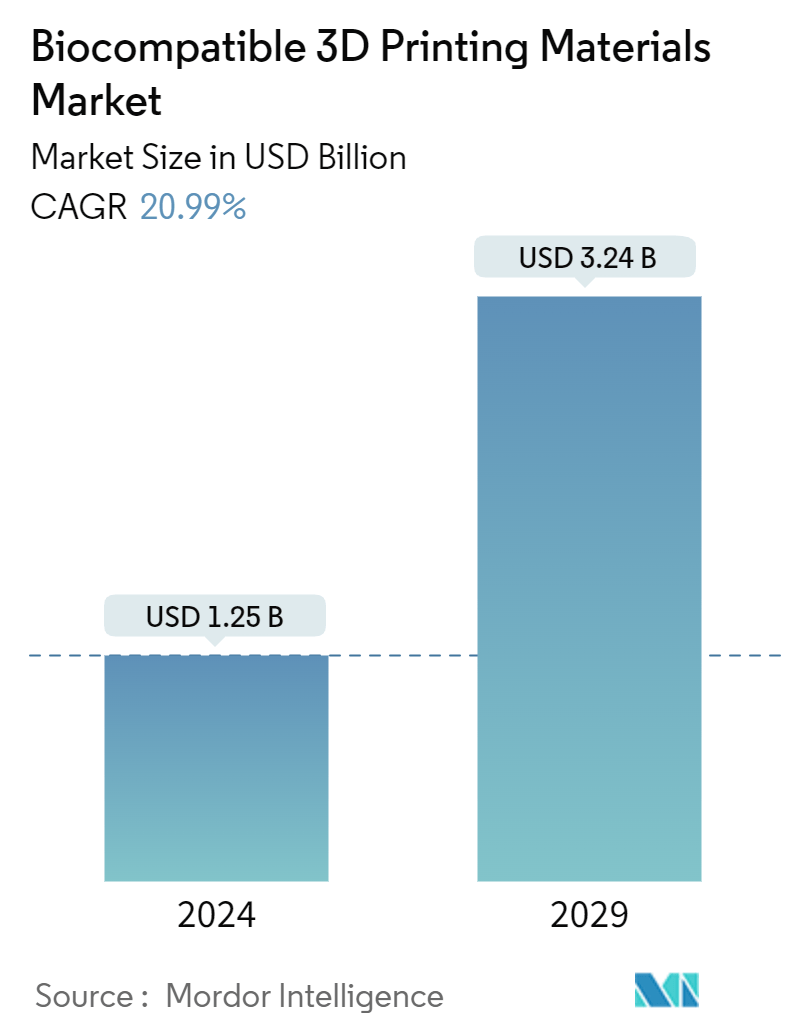Market Size of Biocompatible 3D Printing Materials Industry

| Study Period | 2019 - 2029 |
| Market Size (2024) | USD 1.25 Billion |
| Market Size (2029) | USD 3.24 Billion |
| CAGR (2024 - 2029) | 20.99 % |
| Fastest Growing Market | Asia Pacific |
| Largest Market | North America |
| Market Concentration | Medium |
Major Players
*Disclaimer: Major Players sorted in no particular order |
Biocompatible 3D Printing Materials Market Analysis
The Biocompatible 3D Printing Materials Market size is estimated at USD 1.25 billion in 2024, and is expected to reach USD 3.24 billion by 2029, growing at a CAGR of 20.99% during the forecast period (2024-2029).
Factors such as the high adoption of 3D printing technology in the healthcare industry and the mass customization of biocompatible 3D printing materials are expected to drive market growth during the forecast period.
Continuous advancements in 3D printing technology, such as improved printing resolution, speed, and the availability of a wider range of materials, have made biocompatible 3D printing more feasible and accessible. This has encouraged researchers, engineers, and medical professionals to explore and utilize the technology for various applications. For instance, according to the article published in January 2023 in the Digital Health journal, there is a rapid opportunity for 3D printing in hospitals owing to its specific medical applications, medical subspecialty overviews, general 3D printing technology, and advancements in clinical practice. Hence, owing to the various advantages offered by 3D printing technologies in the medical field, their adoption is likely to increase, leading to market growth over the forecast period.
Also, several companies and research institutes are working towards advancements in biocompatible 3D printing solutions. For instance, in March 2023, experts from the University of Birmingham developed new techniques for 3D bioprinting that will enhance health outcomes, lower cost, and accelerate the production of tissue-compatible artificially created organs. Additionally, in March 2022, Brinter, a Finland-based bioprinting company, partnered with Tampere University’s Kellomäki Lab Biomaterials and Tissue Engineering Group to develop new bio-inks for 3D printing and advance progress within the bioprinting field. With such developments in biocompatible 3D printing, the market studied is expected to witness significant growth in the coming years.
Thus, owing to the increase in the adoption of 3D printing in the medical field, the rise in product launches, and significant strategic activities by the global market players, the market is expected to witness notable growth during the forecast period. However, the high cost associated with 3D printing materials hinders market growth in the long run.

